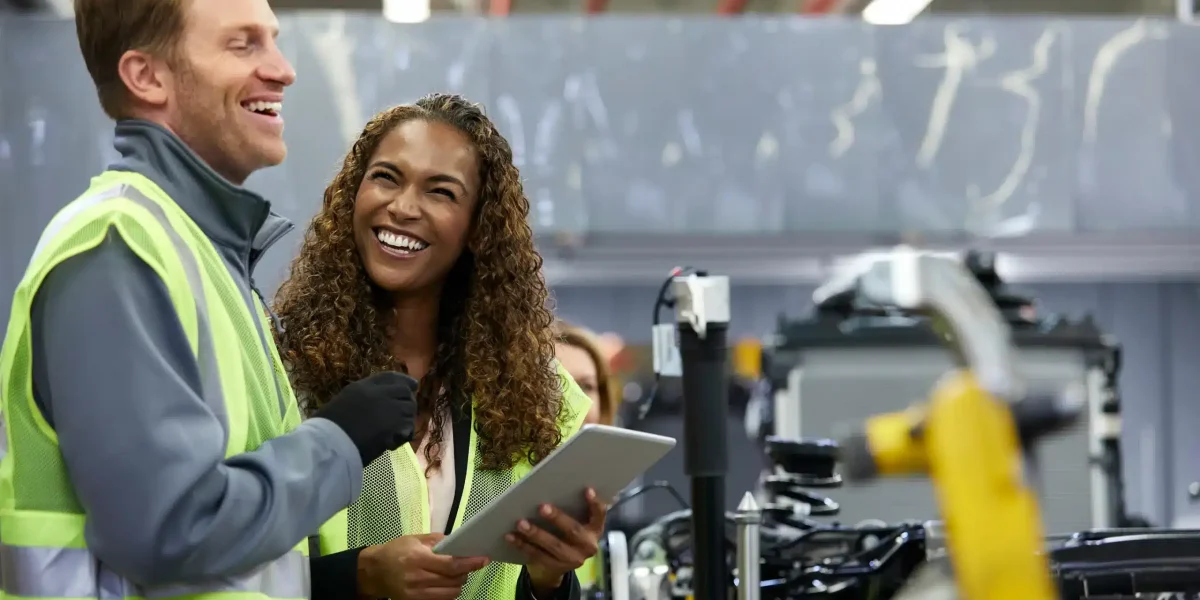The aerospace industry is poised to enter the next major phase of transformation and digital twins are at the heart of this development. Following the upheaval of the COVID-19 pandemic, McKinsey research estimates that the industry is set to make a full recovery by the end of 2024. One of the most highly regulated industries in the world, aerospace is continuing to address challenges such as fuel efficiency. Solutions thus far have not kept pace with the growing demand for air travel.
Digital twins offer key advantages in helping the aerospace industry streamline processes, such as joining the dots on increasing system complexity, meeting rigorous regulatory requirements, and looking ahead.
Digital twins are an achievable goal and are already being implemented in aerospace and other sectors. However, their success hinges on a number of factors.
Laying the groundwork: technological foundations
The technological infrastructure for digital twins is established and widely adopted in the aerospace industry through, for example, tools like Computer-Assisted Design (CAD) systems. However, compliance complexities emerge early in the product lifecycle. For instance, a part designed in a CAD system may initially meet the standards and regulations applicable at the time, but those standards and regulations will evolve.
Ideally, compliance information would be accessible within the CAD system and the engineer could select the exact clause or requirement that the part complies with and what has changed since it was originally designed. Currently, this is difficult to achieve as there is no ‘thread’ connecting CAD systems with the standards.
Digital twins offer key advantages in helping the aerospace industry streamline processes.
The critical role of digital standards in aerospace
Engineering standards are not just reference documents – they are essential tools used at every stage of the product lifecycle.
Over time, parts inevitably change as real-world conditions demand adaptations. Maintaining an accurate record of these changes is vital, yet the traditional reliance on PDF-based standards hampers this process. Without real-time links between standards and CAD systems, there will continue to be a disconnect between what is required to conform with the standard, the physical version and its digital twin.
Paving the way for digital twins’ success
The industry is taking action to address the digitization of standards and their ability to integrate into CAD and other systems. Lead by founding members Aerospace Industries Association, The Boeing Company, Lockheed Martin Corporation, and SAE International, the Digital Standards Alliance (DSA) is dedicated to accelerating the development of standards data integration.
According to the DSA, in order for digital threads and digital twins to achieve their full potential, engineering standards must be available on demand, integrated with accuracy, and presented in the most recent versions.
A key step both standards developers and consumers can take is to shift from page- and document-oriented approaches to data-driven. This transformation involves managing standards at a granular level, such as individual clauses or requirements. This is indeed a natural fit for standards and allows for efficient change management. Benefits include:
- Enrichment with metadata and tagging
- Reuse across other materials, e.g. checklists
- Embedding the clause or requirement in downstream systems and enabling real-time linking back to the master source.
Instead of copying text from static PDF standards, this data-driven approach enables the thread to link the latest requirements directly into the design, manufacturing, and maintenance workflows. This not only enhances compliance, it strengthens collaboration between standards developers and consumers.
Aerospace and artificial intelligence (AI): shaping the future of digital twins
It is worth pausing to consider the impact of AI. What does its rapid development mean for the consumption of standards?
On the one hand, tools like ChatGPT make information in general more widely consumable and understandable through the use of functions like summarization. However, there are well-known challenges associated with Large Language Models (LLMs) such as hallucinations. Indeed, LLMs are increasing the need for improved mechanisms for digital authentication.
Addressing approaches to data models not only paves the way for streamlined consumption of standards and improved use of digital twins, it sets organizations up to leverage key advantages presented by LLMs.
Retrieval augmented generation (RAG), a method that feeds LLMs with structured data like knowledge graphs, can mitigate these risks by providing context-rich insights.
Layering AI over a digital thread – using RAG – presents tremendous benefits for standards developers and consumers. Rather than needing to prompt the LLM to inform staff of necessary steps, its understanding of the context means the LLM already knows what must be done.
The next frontier in aerospace efficiency and compliance
Digital twins stand out as a transformative tool for achieving operational efficiency, regulatory compliance and enhanced performance. Integrating digital standards with these virtual models is crucial to bridging the gap between design and real-world application. It means that organizations not only keep up with compliance obligations but plan for the future with greater agility.
The role of AI and machine learning further amplifies the promise of digital twins with tools like RAG enabling smarter, context-aware operations. In this dynamic and continuously evolving landscape, digital twins are not just a technological milestone but an essential bridge to the future of aerospace innovation.

